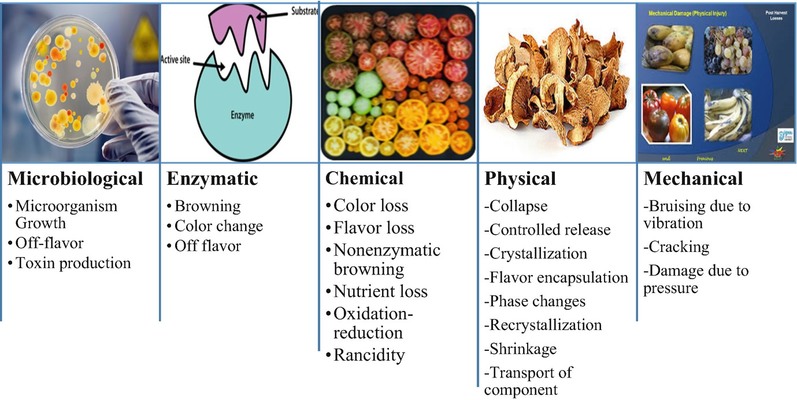CAUSES OF FOOD DETERMINATION
Food production (especially food of plant origin) is not in line with consumption, which implies the need to store food.
Spoilage of food significantly changes the chemical composition, physical structure and organoleptic properties, as a result of which it loses its original qualities, spoils and ultimately becomes harmful to human health, ie. unusable for food.
https://www.youtube.com/watch?v=c0En-_BVbGc&t=5s
https://www.youtube.com/watch?v=D0cBO5jrzCI
https://www.youtube.com/watch?v=w2-v5F67Pkc
METHODS OF FOOD PRESERVATION
https://www.youtube.com/watch?v=KvnWAsTp98A
https://biologyreader.com/food-preservation-techniques.html
In order to meet constant food needs and to avoid plant and animal origin food that is not consumed, spoiled and become unusable immediately after picking or slaughter, producers realized that food should be preserved until consumption.
Food preservation means all procedures by which food is stabilized in the chemical and biological sense for a shorter or longer period of storage. Except for the nutrition of the population (more uniform, healthier), canning enables the creation of food stocks for the period of emergency situations: infertile years, natural disasters, war and the like.
https://commonsensehome.com/home-food-preservation/
1. Physical methods (physico-chemical procedures) is the application of:
• High temperatures - pasteurization and sterilization
• Low temperatures - cooling (for shorter canning from – 4o C to 4o C), deep freezing (for longer canning from – 40o C to – 20o C)
• Concentration - drying (water content is reduced to 10%), and cooking.
2. Chemical methods (chemical processes)
Application of various chemical substances - addition of preservatives, which have a microbicidal effect or inhibit biochemical processes.
• Real preservatives - additives
• Preservatives spices - sugar, which increases the% of dry matter, and vinegar lowers the pH.
3. Biological methods - biological procedures include procedures in which foods (fruits, vegetables, dairy products, cereals and some meat products) are preserved in such a way as to enable the activity of certain groups of M.O. (lactic and vinegar bacteria, yeasts) that produce products that are harmful to other M.O.
The least harmful changes in food quality are caused by biological processes or biochemical canning procedures. The choice of canning procedures depends on the general quality of the food being preserved.

ASSIGNMENT:
Your task is to explain one method of conservation in your own way and upload it to the following twinboard!